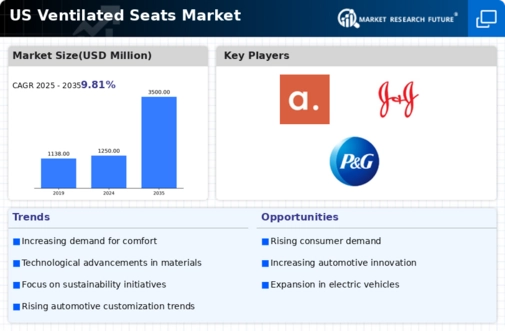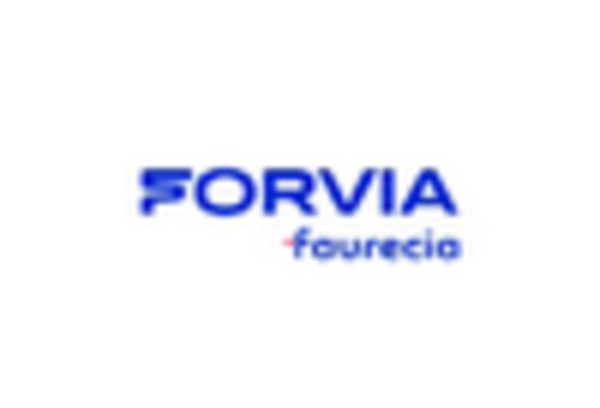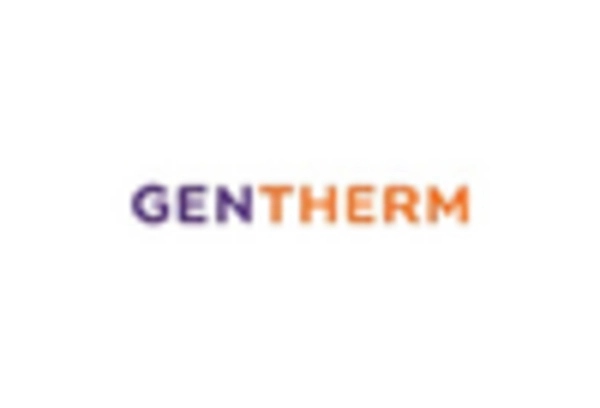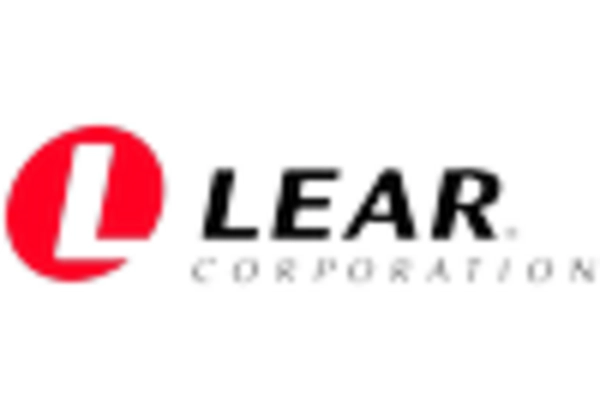Increasing Focus on Vehicle Customization
The ventilated seats market is experiencing growth due to an increasing focus on vehicle customization among consumers. As buyers seek to personalize their vehicles, manufacturers are responding by offering advanced seating options, including ventilated seats. This trend is particularly evident in the luxury and premium vehicle segments, where consumers are willing to invest in features that enhance comfort and convenience. According to industry reports, the demand for customized seating solutions is projected to grow at a CAGR of approximately 8% over the next five years. This shift towards personalization is likely to drive the ventilated seats market, as consumers prioritize features that align with their individual preferences and lifestyles.
Shift Towards Electric and Hybrid Vehicles
The ventilated seats market is poised for growth due to the shift towards electric and hybrid vehicles. As these vehicles gain popularity, manufacturers are integrating advanced seating technologies to enhance comfort and energy efficiency. Ventilated seats, which can improve air circulation and reduce heat buildup, align well with the eco-friendly ethos of electric vehicles. Industry analysts suggest that the market for electric vehicles is expected to grow by over 20% annually, which could lead to increased demand for ventilated seats as part of the overall vehicle comfort package. This trend indicates a potential expansion of the ventilated seats market as manufacturers adapt to the evolving automotive landscape.
Rising Awareness of Climate Control Features
The ventilated seats market is benefiting from a rising awareness of climate control features in vehicles. As consumers become more conscious of the importance of comfort during varying weather conditions, the demand for ventilated seats is expected to increase. These seats provide a cooling effect, which is particularly appealing in warmer climates. Market data indicates that approximately 30% of consumers consider climate control features as a key factor when purchasing a vehicle. This growing awareness is likely to propel the ventilated seats market, as manufacturers incorporate these features into their designs to meet consumer expectations and enhance overall driving experiences.
Technological Integration in Automotive Design
The ventilated seats market is influenced by the technological integration in automotive design. Innovations such as smart seating systems, which can adjust ventilation based on temperature and humidity levels, are becoming more prevalent. This integration not only enhances comfort but also improves the overall user experience. As technology continues to evolve, the demand for such advanced features is likely to rise. Market Research Future suggests that the adoption of smart technologies in vehicles could increase by 15% over the next few years, thereby positively impacting the ventilated seats market. Manufacturers are expected to invest in research and development to create more sophisticated seating solutions that cater to tech-savvy consumers.
Growing Emphasis on Ergonomics and Health Benefits
The ventilated seats market is experiencing growth due to a growing emphasis on ergonomics and health benefits associated with seating solutions. As consumers become more aware of the impact of seating on posture and overall well-being, the demand for ergonomically designed ventilated seats is likely to increase. These seats not only provide comfort but also promote better posture and reduce the risk of discomfort during long drives. Industry data indicates that approximately 25% of consumers prioritize ergonomic features when selecting vehicle interiors. This trend suggests a potential expansion of the ventilated seats market as manufacturers focus on developing seating solutions that align with health-conscious consumer preferences.

















Leave a Comment